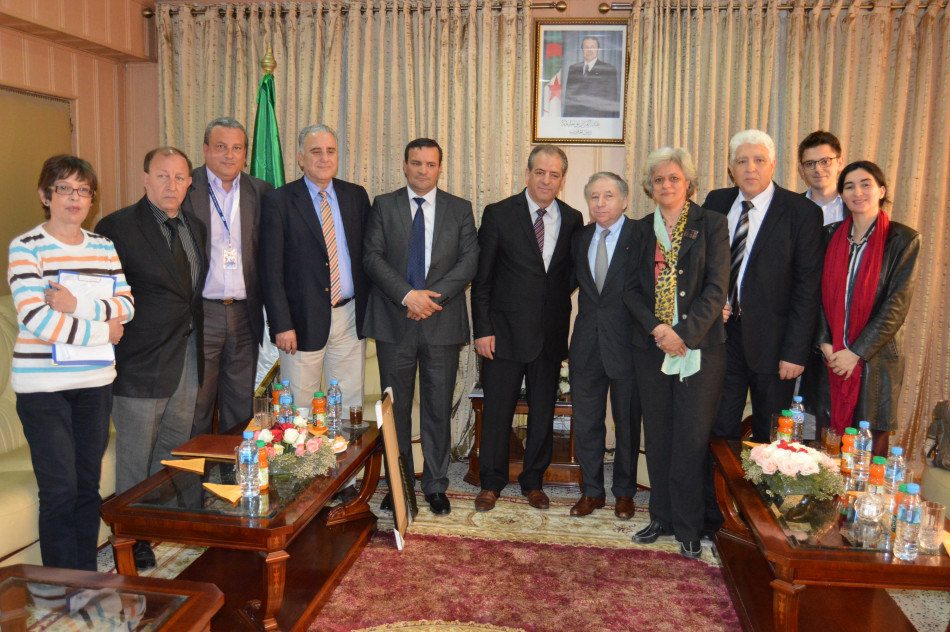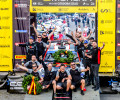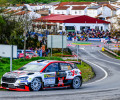Making motor sport work on shifting sands – Part 1

Since its inception more than two decades ago, the Fédération Algérienne des Sports Mécaniques (FASM) has taken steps to revive Algeria’s great motor sport tradition, but amid tough times progress hasn’t always been easy...
Algeria’s relationship with motor sport is one that harks back to the most lustrous years of what might be termed the Golden Age of grand prix racing.
In the inter-war years, during which races of spectacular endurance flourished around the world, Algeria joined a growing company of grand prix hosts, with a 350km road race first staged in Staouéli near Algiers in 1928. By 1934 the race had moved to an 8km street circuit in the western Algiers suburb of Bouzaréah, where the event attracted many of the era’s legendary racers, including Giuseppe Farina, Louis Chiron and Philippe Etancelin and race winner Jean- Pierre Wimille.
The golden age was drawing to an end, however. First the Second World War and then the country’s struggle for independence put motor sport on hiatus. In the 1960s, though, motor sport once again began to draw enthusiasts together, as Chihab Baloul, President of the Fédération Algérienne des Sports Mécaniques (FASM), the country’s ASN explains.
“The birth of motor sports in Algeria came after the country became independent, with the creation of the first motor sport federation by a group of motor sport fans who loved speed,” he says. “They then started holding hill climb races and speed races within city limits of the provinces of Algiers, Blida, Sidi Bel Abbes and Oran, which are provinces known for the practice of this sport, using of course the resources available at the time.”
By the beginning of the 1990s a more formalised structure was required and in 1991, the nation’s automobile and motorcycle federations joined together to form the Fédération Algérienne des Sports Mécaniques (FASM).
“Supported by an ever-changing number of volunteers, it began with around 15 cars such as the Dauphines, R8s, Alpines and BMWs,” Baloul recalls.
However, despite enthusiasm for competition, staging motor sport events in the country during the following decade was nigh on impossible.
“Our sport almost ceased to exist for a decade, from 1990 to 2000, due to safety concerns,” the FASM President admits. “It was only in 2001 that a plan to relaunch the sport was developed, through the organisation of local competitions in order to bring it back to life, a difficult challenge as habits and traditions had long been forgotten.
“The development work was not easy, particularly because there was not enough financial backing to support the development goals,” he adds. “It was also not easy to bring together those people who had participated in the sport in the past.”
While rebuilding enthusiasm for motor sport has not been easy, the club now boasts a solid membership and hosts a wide range of events each year.
“Currently the Federation has around 100 racing cars, such as Subaru cars for speed events, and 120 4X4s for off- road rallies,” Baloul says. “In addition, we have vehicles for regularity rallies and gymkhanas. The number of active drivers varies from year to year, from 700 to 1,500 drivers, including karting.”
Karting is one area that has blossomed, thanks in large part to the construction of two recreational karting arenas. “The lack of facilities also affected the redevelopment of motor sports; it was only in the last few years that investors were able to build two karting circuits for recreational purposes,” says the FASM President. “Children were able to discover karting, however the lack of gear, such as karts and necessary equipment, even for racing drivers, had a negative impact on development.”
The availability of recreational locations does not address the core developmental issues, however, which Baloul succinctly describes as “facilities and financial support”.
“In order to attract drivers, the Federation takes care of everything, including accommodation and food,” he says. “Officials do not want to volunteer anymore. Everyone wants to be paid these days, which makes the task difficult. The FASM is often faced with equipment, financial and, in particular, facility issues. While the state pays a subsidy, it is not enough to cover the costs related to the development plans.”
Sponsorship of events does exist, the FASM President adds, but it is often “more symbolic than anything else, and comes about through personal contacts, not through a « marketing strategy ».


 Facebook
Facebook Twitter
Twitter






